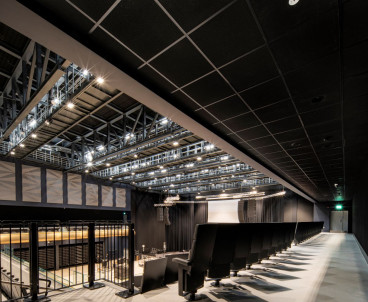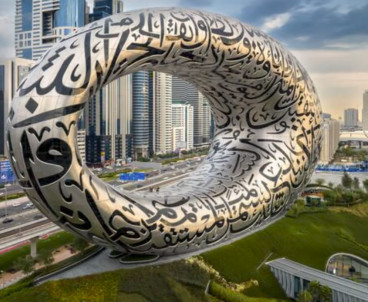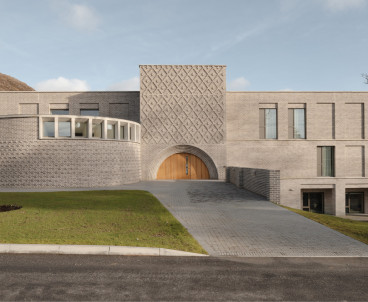THERMALLY-PROFICIENT FINISH FOR IMPRESSIVE ARTS CENTRE
Specified as part of a waterproof system, Gradient’s Powerdeck® F and Deck VQ® boards’ superb strength and thermal capability helped ensure a popular art centre’s roof terrace extension met the regulatory U-value, as well as provide it with long-term protection against instances of cold bridging.
The Courtyard Centre for the Arts in Herefordshire is one of the county’s landmark social and cultural hubs. Featuring a 400-seat main theatre, a 120-seat studio theatre, rehearsal rooms, gallery, meeting spaces and an award-winning cafe bar, the complex hosts a variety of community-based entertainment from pantos and youth theatre, to film and visual arts shows.
As part of a £1.5m redesign, the Courtyard Centre was extended to include a shop selling locally-produced arts and crafts and a new multi-purpose meeting room. A Capital Grant on behalf of Arts Council England funded the refurbishment, which also included a reconfiguration of the front of house area to provide improved box accessibility, and an extension to its café bar area and first-floor dining space to create an outside terrace.
For the café bar area, the client required cut-to-falls insulation as part of the flat roof’s waterproofing system. However, as the waterproofing abutted a glass façade, the challenge was to forward an insulation solution that optimised the adjoining building’s windowed element in terms of the amount of light it allowed, whilst ensuring the roof itself achieved the regulatory U-value. As the 90m2 roof was without a sufficient upstand, the insulation’s profile needed to be kept to a minimum to avoid compromising the windows’ threshold. Working in close conjunction with ICB Waterproofing, Gradient specified a build-up comprising Deck-VQ®, an ultra-thin vacuuminsulation panel (VIP) and 45mm-thick Powerdeck® F PIR boards, which provided the system’s super-flat, thermally-efficient finish. The combination of the two solutions, which are renowned for a performance that belies their slender composition, solved the challenge of achieving the required 0.18 W/m2KU-value performance with a minimal roof build-up.
Of particular value when used in built-up felt and single-ply membrane waterproofing systems, Powerdeck® F boards offer high-compressive strength and excellent thermal performance (λ = 0.024 - 0.026 W/mK). This ensures a supremely flat surface finish required for optimum performance in a range of watertight systems in new-build and refurbishment projects.
With Deck-VQ®, which is a VIP in a fully-encapsulated PIR protective shell, housebuilders and homeowners can install quality insulation in limited-space areas that are out-of-bounds to other products. Therefore, it offers a reliable, cost-effective method of adding real value to a property. Its superior thermal credentials – it has a lambda value of the core of 0.006 W/mK – comes to the fore in enabling even the most complex flat roof and terrace projects to be carried out without the need for structural changes. This results in reduced on-site working times, materials and a more sustainable build.
Steve Evans, Director at S & P Roofing, the company which installed the extension’s waterproof roof, said: “The insulation build-up needed to be minimalised to remain below the adjoining windows’ threshold, but thermally-effective enough to meet regulation U-values. Powerdeck® F boards, in conjunction with the Deck-VQ® system, were absolutely ideal for the task. Its super-slim structure provided the perfect finish for the waterproof system. With its excellent high compressive strength, Powerdeck® F boards are built to withstand long-term wear and tear caused by exposure to severe weather and a high volume of foot traffic.
It’s a fantastically-effective product, which is also extremely easy to work with.”
Thanks to the Powerdeck®F boards’ superb strength and thermal performance, along with Deck-VQ®’s significant contribution, the Courtyard Centre’s impressive new extension has a smart waterproof system to match; one which meets regulatory U-value performance and is long-term protected against the elements and issues such as cold bridging, which could lead to damp and future costly repairs.
Additional case studies



